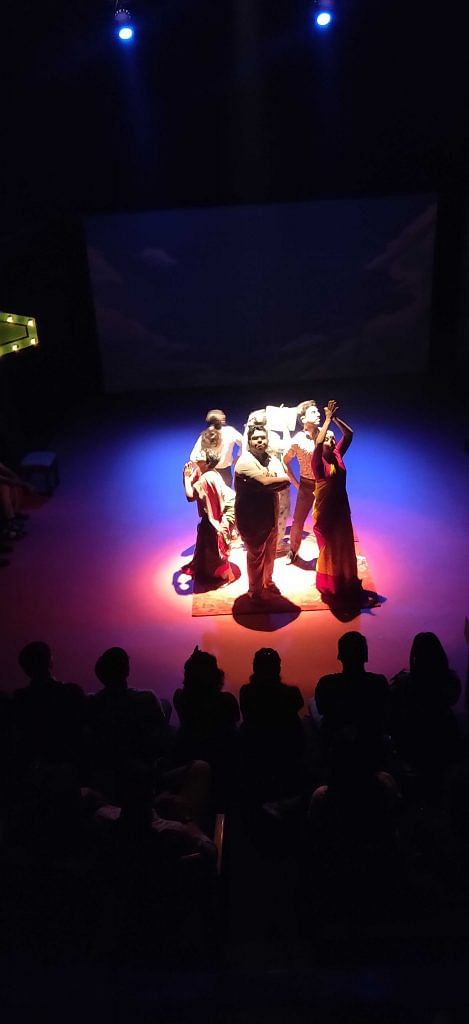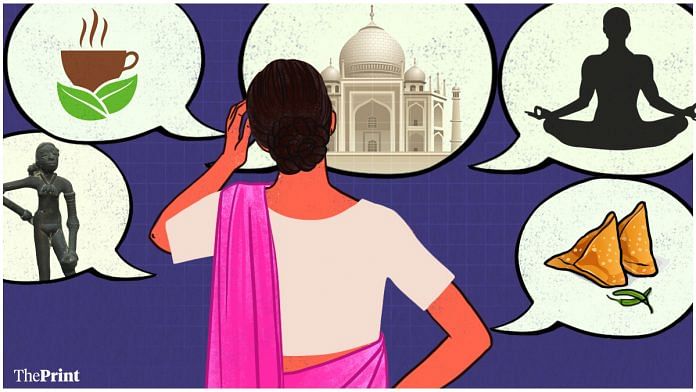If there was a cultural artefact that truly represents everything that is India today, what would it be? I have been grappling with this question since I went to watch director Nikhil Mehta’s Blackbox play called For The Record last month in Delhi. The play threw up many tangible and intangible cultural artefacts–Taj Mahal, yoga, Carnatic music, samosa, Khajuraho, Rasgulla, Sanskrit, and so on.
If we pick the right object, it would be a statement about who we are and signal to the world about how we are different.
Legendary British Museum curator Neil MacGregor wrote in his seminal book A History of the World in 100 Objects that larger meanings are anchored in historical objects because they “speak of whole societies and complex processes rather than individual events, and tell the world for which they were made, as well as of the later periods which reshaped or relocated them.”
And yet, there is no single object that can do that for India.
Phir bhi dil hai Hindustani
The plot of Mehta’s play revolves around a government tribunal formed to send three Indian artefacts to the United Nations in 1971. After seven days, the tribunal remains undecided, and the five-member team ends up arguing, fighting and disagreeing. But the all-encompassing India object is elusive.

If you are Amartya Sen, you would say that this very act of disagreeing and arguing is the essence of India. His 2005 book, The Argumentative Indian, seems almost like a relic today. It came out at a time when disagreement was seen as a pin you wear on your coat. Just five years before the book, there was a Shah Rukh Khan-starrer called Phir Bhi Dil Hai Hindustani whose title song exuded pride in our daily, lovable imperfections and incongruities, and called it quintessentially Indian. There were other Bollywood offerings too. Raj Kapoor sang that it was Ganga, and Manoj Kumar offered zero.
That was a different India.
Today, in 2022, the pursuit of uniformity is the single-biggest goal – whether it is the interpretation of religion, freedoms, citizenship or nationalism.
In fact, the play’s artifice makes you question this very need for one idea, one voice and one object.
Also read: Shah Rukh Khan was India. And then India changed
Is democracy, ahimsa our calling card?
If we were to pick a historical object to send, which period would it be? Pre-Vedic period, Buddhist India, Gupta era, pre-Islam period, Chola dynasty, or Mughal rule? Objects contain stories, and the story of each of these eras is one of continuity and simultaneity. These periods don’t exist in tightly boxed, neatly wrapped silos. Cultures bleed into each other. Poet Ashok Vajpeyi called it the ‘simultaneity of cultures’ that Indians carry within themselves.
Also, “a history of objects can never itself be fully balanced because it depends entirely on what happens to survive,” wrote MacGregor. In India’s case, the objects we have today are those that survived invasions, occupations, and foreign rule. So, are they the most authentic custodian of what India is?
Instead, if India had to send an intangible idea as its ambassador, it would be democracy and ahimsa.
The third could be ‘unity in diversity’ – but then, that is really not unique to India, much as we may like to believe. You can look at the United States, China, Russia, Pakistan, and Afghanistan – all these are diverse. The Indian exceptionalism on this front is a lullaby we sing to ourselves. It helps us feel proud. But that’s all there is.
Ahimsa is a touchstone we carry, a charming souvenir from our freedom movement. But if we go beyond the freedom movement and claim that Indian civilisation has never conquered other cultures, it could get tricky, argued author Anirudh Kanisetti. Cholas invaded Bengal, Indonesia; Kashmiri rulers invaded Afghanistan, Xinjiang.
That we are a vibrant democracy is our unique calling card. Yes, India is the largest one. Would we limit it to the elections, voting, and EVMs? After all, Bangladesh, Pakistan, Nepal, and Sri Lanka have regular elections. That we vote isn’t a miracle in the region.
If we expand it to civil rights and real freedom of institutions, there are many nations that leave us behind.
Also read: What gives Indian democracy its long life? The choices elites make
The quicksand of nostalgia
The problem with being obsessed without studying or interrogating it is that it leads to picture postcard-style nostalgia. We did not live in better times, we did not live in simpler times. The past was even more chaotic, unjust, violent and frantic.
Today, India is looking toward the distant Vedic past for that perfect origin story, which can inspire us to forge ahead. Anybody who questions that idyllic past is castigated and maligned. There is an important line in the play that speaks to this moment of our nation: ‘Dissent is not the enemy of culture. Nostalgia is.’
Nostalgia makes us trapped in a fixed, unchanging culture as an imagination of the past. But culture is fluid, evolving. And acknowledging this fluidity is what strengthens a nation. We call ourselves a living culture. By its very definition, that means we improvise and adapt. Culture will slip through your fingers like sand, the minute you try to define it.
It isn’t surprising that the new Prime Ministers’ Museum in Delhi’s central motif is ‘nirantarta’ or continuity. But then, you can say that for any nation. It’s not unique to us.
Also read: PMs’ Museum bedazzles and entertains. But it doesn’t tell us who we are
Between Kohinoor, tea and Gandhi
And yet, the 1972 tribunal in the play drew a blank. Members fought and could not come to a definitive conclusion. Much like Indians today who can’t agree on what the country stands for. The past is way too complex for us to apply our reductive demands of the 21st century to.
When one member offers Carnatic music, the other attacks her for being casteist. When another offers Mughal-E-Azam, the other says it is fake and not authentic history. Then another offers the Dancing Girl artefact, but then someone points out that it was from Mohenjodaro, which is in Pakistan, not India.
They are so frustrated that they decide to pick one through a game show. Bizarre choices are thrown and voted upon. Bodhi tree vs Gandhi. Mahabharata vs salt. Iyengar yoga vs MS Subbulakshmi. Taj Mahal vs zero. Kanjeepuram saree vs Darjeeling tea. This gamification of the nation’s identity is a moment of political satire at its best.
Perhaps they should bring back the Kohinoor first and then send it as India’s artefact to the UN, says one actor.
If I had to pick one today, I would go nuts too. I can think of many beautiful, iconic objects, but not one.
The fact is, Indians will argue themselves out of any single idea, identity or representative artefact. Because anything you say about India, the opposite is also true, goes the cliché. That’s why the play’s end dialogue is: ‘India is nothing. It is too much.’
Rama Lakshmi is the Opinion and Features Editor at ThePrint. She tweets @RamaNewDelhi. Views are personal.
(Edited by Neera Majumdar)



